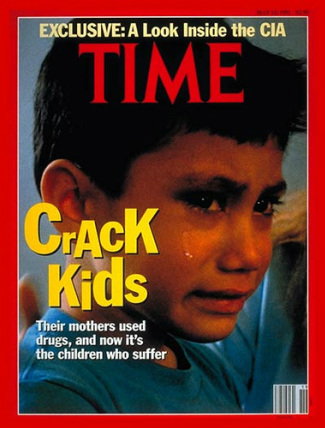 "Crack babies" became a moral panic in the 1980s "Crack babies" became a moral panic in the 1980s Tags: aging/life course, children/youth, crime/law/deviance, discourse/language, health/medicine, inequality, media, prejudice/discrimination, race/ethnicity, crack, cocaine, drugs, moral panic, war on drugs, 06 to 10 mins Year: 2013 Length: 10:10 Access: New York Times Summary: In their book, Policing the Crisis, Stuart Hall and his coauthors investigate what was reported to be a sharp increase in muggings that occurred in Britain at the start of the 1970s. In fact, despite much public concern, a rash of criminality could not be verified, leading the authors to consider a far more likely scenario, that British society was gripped by something called a moral panic. "When the official reaction to a person, groups of persons or series of events is out of all proportion to the actual threat offered, when 'experts', in the form of police chiefs, the judiciary, politicians and editors perceive the threat in all but identical terms, and appear to talk 'with one voice' of rates, diagnoses, prognoses and solutions, when the media representations universally stress 'sudden and dramatic' increases (in numbers involved or events) and 'novelty', above and beyond that which a sober, realistic appraisal could sustain, then we believe it is appropriate to speak of the beginnings of a moral panic." The public fear about widespread muggings in Britain can be likened to the sudden swell of concern in the U.S. regarding the spread of crack cocaine in the 1980s. Unlike muggings, cocaine use was truly on the rise, but in many ways the dilemma was similarly blown "all out of proportion." The above video chronicles the role played by the media in exaggerating the scale of the cocaine problem and the dire health consequences predicted for the children of women who used the drug. As expressed by one politician, there was a belief that crack babies would "overwhelm every social service delivery system that they come into contact with throughout the rest of their lives." As the video explains, many people born to mothers who were addicted to crack have been able to lead lives free of the health complications foretold by newscasters. So if the actual threat posed by the growing use of cocaine was something different than the one portrayed in the media, why did the moral panic about "crack babies" take hold in the public consciousness? One explanation is that the preliminary research, which first raised the issue of potential health consequences for these children, coincided with President Ronald Reagan's War on Drugs. As the legal scholar Michelle Alexander notes, in an effort to secure funding for the new war, Reagan actually hired staff in 1985 to publicize the emergence of crack cocaine, and a national tragedy involving "crack babies" was just the kind of story they sought to promote. A second explanation for why the moral panic took hold ties in the fact that the War on Drugs has been a racist war from the very start, and the idea of a scourge of crack-addicted pregnant mothers aligned well with long held, racist stereotypes of black welfare queens who raise children in crime-infested neighborhoods. Submitted By: Lester Andrist
2 Comments
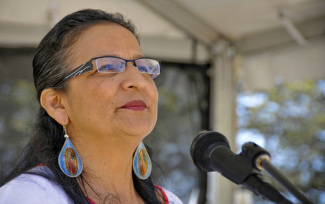 Susana Almanza recounts her work for environmental justice Susana Almanza recounts her work for environmental justice Tags: environment, health/medicine, inequality, race/ethnicity, social mvmts/social change/resistance, environmental justice, environmental racism, subtitles/CC, 00 to 05 mins Year: 2012 Length: 4:03 Access: YouTube Summary: In this video Susana Almanza explains how, historically, communities of color, Latinos, African-Americans, Asian-Americans and Native-Americans, have been disproportionately affected by industrial pollution. At the same time, these communities have not benefited equitably from these industries. She describes East Austin, Texas, where a power plant, fuel storage tank farms, refineries, lumber companies, and high tech industries regularly emit their pollutants into the air and water. In the video she goes on to describe the efforts of social movement activists, which led to the relocation of a gas tank farm that had been emitting toxic chemicals in the community for over 35 years and causing chronic illnesses for neighborhood residents. This short video could be used as an example of a successful social movement. The video might also serve as a platform for launching into much deeper discussions about environmental justice and environmental racism. Submitted By: Erika Giesen  Film explores cultural history & nutrition of a U.S. culinary tradition. Film explores cultural history & nutrition of a U.S. culinary tradition. Tags: class, culture, food/agriculture, health/medicine, race/ethnicity, African Americans, American South, culinary traditions, soul food, subtitles/CC, 61+ mins Year: 2012 Length: 64:00 Access: iTunes or Amazon (online purchase; trailer here) Summary: In the documentary Soul Food Junkies, filmmaker Byron Hurt "sets out on a historical and culinary journey to learn more about the soul food tradition and its relevance to black cultural identity. Through candid interviews with soul food cooks, historians, and scholars, as well as with doctors, family members, and everyday people, the film puts this culinary tradition under the microscope to examine both its positive and negative consequences. Hurt also explores the socioeconomic conditions in predominantly black neighborhoods, where it can be difficult to find healthy options, and meets some pioneers in the emerging food justice movement who are challenging the food industry, encouraging communities to 'go back to the land' by creating sustainable and eco-friendly gardens, advocating for healthier options in local supermarkets, supporting local farmers' markets, avoiding highly processed fast foods, and cooking healthier versions of traditional soul food." (This excerpt is from the film's website; additional educational materials can be found here; eight healthy soul-food-inspired recipes can be found here.) Submitted By: Valerie Chepp 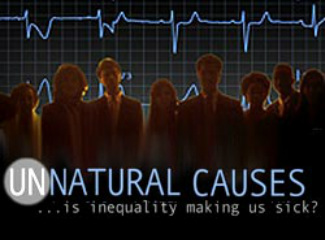 Series explores racial & socioeconomic inequalities in health. Series explores racial & socioeconomic inequalities in health. Tags: biology, class, health/medicine, inequality, race/ethnicity, health insurance, subtitles/CC, 21 to 60 mins Year: 2008 Length: 57:30 (episode one; series trailer here) Access: no online access Summary: The seven-part documentary series, UNNATURAL CAUSES, "crisscrosses the nation uncovering startling new findings that suggest there is much more to our health than bad habits, health care, or unlucky genes. The social circumstances in which we are born, live, and work can actually get under our skin and disrupt our physiology as much as germs and viruses. Among the clues: It's not CEOs dropping dead from heart attacks, but their subordinates * Poor smokers are at higher risk of disease than rich smokers * Recent Latino immigrants, though typically poorer, enjoy better health than the average American. But the longer they're here, the worse their health becomes. Furthermore, research has revealed a gradient to health. At each step down the class pyramid, people tend to be sicker and die sooner. Poor Americans die on average almost six years sooner than the rich. No surprise. But even middle class Americans die two years sooner than the rich. And at each step on that pyramid, African Americans, on average, fare worse than their white counterparts. In many cases, so do other peoples of color. But why? How can class and racism disrupt our physiology? Through what channels might inequities in housing, wealthy, jobs, and education, along with a lack of power and control over one's life, translate into bad health? What is it about our poor neighborhoods, especially neglected neighborhoods of color, that is so deadly? How are the behavioral choices we make (such as diet and exercise) constrained by the choices we have? Evidence suggests that more equitable social policies, secure living-wage jobs, affordable housing, racial justice, good schools, community empowerment, and family supports are health issues just as critical as diet, tobacco use, and exercise. As a society, we have a choice: invest in the conditions for health now, or pay to repair our bodies later." (This excerpt is from the film's website; additional educational materials can be found here.) Submitted By: Jimena Alvarado 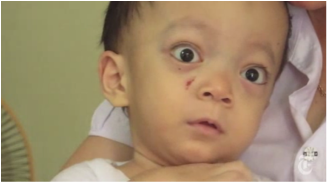 This child has a rare disorder and is nearly blind from Agent Orange. This child has a rare disorder and is nearly blind from Agent Orange. Tags: environment, globalization, health/medicine, war/military, agent orange, chemical warfare, dupont, vietnam war, 00 to 05 mins Year: 2012 Length: 4:09 Access: New York Times Summary: This New York Times video examines the relationship between chemical war and the long-term effects on human health. As The New York Times reported in the accompanying article, "Over a decade of war, the United States sprayed about 20 million gallons of Agent Orange and other herbicides in Vietnam, Cambodia and Laos, halting only after scientists commissioned by the Agriculture Department issued a report expressing concerns that dioxin showed 'a significant potential to increase birth defects.' By the time the spraying stopped, Agent Orange and other herbicides had destroyed 2 million hectares, or 5.5 million acres, of forest and cropland, an area roughly the size of New Jersey." Forty years later, there are areas where no plant life will grow and the human health toll is becoming more clear. One example of this is the child in the image here, who has a rare bone marrow disorder that has made him nearly blind and has required he has a blood transfusion every 2 weeks. As a result of long-term effects like this, many Vietnamese people continue to hold bitterness toward the US government and argue that the US has not taken responsibility for its activities, which many people believe were criminal. In 2012, the US government launched its first program to clean up some of the Agent Orange (which includes $43 million in funding to clean up one site where the soil remains highly contaminated and provide a program to help disabled victims). One American advocate of providing this assistance says that the key to securing US cooperation is to focus on assisting the disabled and not focus on who was responsible; he argues "after so many years, why waste time arguing about the past? why get involved in the blame game?... Let's help everyone in need." Some critics say this does not go far enough and some parents of the victims want financial compensation. Viewers may consider whether the US has responsibility for the long-term effects of Agent Orange in Vietnam? What responsibilities does this include and are they going far enough? For example, does the US owe financial reparations to victims? Does Dow Chemical (the manufacturer of Agent Orange) have any responsibility? Submitted By: Paul Dean 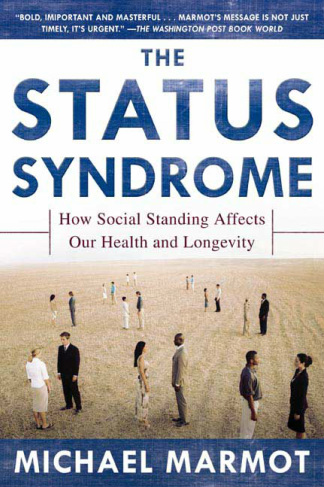 Higher class inequality leads to higher physical stress. Higher class inequality leads to higher physical stress. Tags: class, health/medicine, inequality, status, subtitles/CC, 06 to 10 mins Year: 2011 Length: 10:29 Access: YouTube Summary: While the relationship between poverty and health outcomes are clear, the overall level of class inequality (i.e. the relative gap between the rich and poor) also shapes health outcomes and this relationship tends to be less intuitive. For example, we know that people with low incomes in the US often lack health insurance, cannot afford to pay for medical treatments, lack education associated with better health, and so on. However, regardless of the level of a person's income, the gap between a person's income and the upper tier of society also affects health outcomes in unique ways. This PBS video examines this complex relationship. For example, drawing upon medical researcher Michael Marmot's The Status Syndrome: How Social Standing Affects our Health and Longevity (2004) it documents the link between high status differentials, stress, and health. In highly unequal societies, individuals judge each other more by status and feel more judged by others. Richard Wilkinson, quoting from his research (with co-author Kate Pickett) in The Spirit Level: Why Greater Equality Makes Societies Stronger (2010), notes a strong correlation between high income inequalities in a society and many negative social factors, including health, more violence, drug problems, child well-being, and mental illness. It tells the story of one high school student who is from a poor area and was able to test into a high-achieving school attended by mostly wealthy students, but shows how much stress she experienced in comparing herself to other students. In each of these instances, the emphasis is not on the lack of resources, but rather how the extent of inequality within a society leads to health outcomes in unique ways. The video also explores racial differences in one health outcome: high blood pressure. While some famous commentators have incorrectly argued for a biological explanation, the video links this to social factors. It notes that this racial disparity exists in the US but, when we look globally, black individuals have high blood pressure rates similar to whites. The biological explanation of racial differences in health outcomes has been soundly refuted. At the end of the video, commentators debate possible positive dimensions of inequality. While one poor African-American student and an economist argue the inequality gave motivation to work harder, Wilkinson argues against this interpretation. Submitted By: Paul Dean 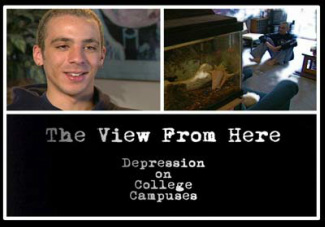 This short film explores depression in higher education This short film explores depression in higher education Tags: health/medicine, psychology/social psychology, depression, higher education, mental health, stigma, 21 to 60 mins Year: 2012 Length: 29:08 Access: University of Michigan Summary: As stated on the University of Michigan Depression Center's website: "Created to promote awareness about depression on the college campus, [The View From Here] features students from differing identity groups, ages, and degree programs telling of their experiences with the disease. It also features faculty and staff who have worked with depressed students, and faculty and staff who have suffered from depression themselves." Specifically, the documentary draws attention to the complexity of depression, as many people—including those who suffer from it—are unaware of the symptoms and prevalence of depression. Part of the complexity relates to the numerous symptoms that are associated with the condition, which range from anxiety, anger, feelings of emptiness, substance abuse, reckless behavior, suicidal thoughts, loss of appetite, and panic, among many others. Because of this, depression can often go undiagnosed. The video would be useful to feature in a class on the sociology of mental health, as it offers many points of entry for discussing the various social factors that influence mental health. In addition to social triggers, the video also discusses treatment, which can include social and non-social forms of treatment such as counseling, spiritual treatments, and medication. Submitted By: AuntJessica 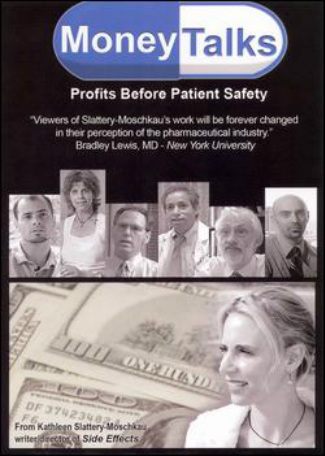 Film exposes big drug companies' dangerous marketing tactics. Film exposes big drug companies' dangerous marketing tactics.
Tags: capitalism, commodification, consumption/consumerism, corporations, health/medicine, marketing/brands, pharmaceutical industry, prescription drugs, 21 to 60 mins
Year: 2007 Length: 49:23 Access: YouTube (trailer) Summary: The filmmakers of this documentary argue that "missing in the health care debate is how drug companies are putting your and your family's safety at risk in order to make more money." Money Talks: Profits Before Patient Safety exposes the questionable tactics that big drug companies use to make record profits by playing with the safety of our health care. Using misleading advertising, attractive "drug reps" who wine and dine doctors, and other unethical practices, the drug industry makes billions of dollars every year selling us unsafe, unnecessary, and overpriced drugs. The film gives an in-depth, academic perspective on the questionable marketing tactics of the pharmaceutical industry, and features the commentary of investigative journalists, former pharmaceutical sales representatives, and medical professionals including Dr. John Abramson, author of Overdo$ed America, and Alex Sugerman-Brozan, director of the Prescription Access Litigation Project. Other notable interviewees include Dr. Bob Goodman of Columbia University, founder of the "No Free Lunch" program, and Dr. Jerome Hoffman of UCLA Medical School. Money Talks: Profits Before Patient Safety was chosen by the American Library Association as one of the most notable films for adults in 2008. Submitted By: Holly Mosher 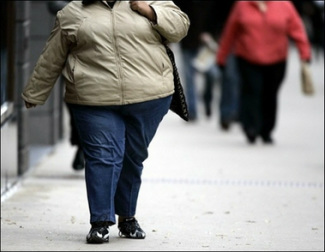 Tags: bodies, health/medicine, media, prejudice/discrimination, fat shaming, obesity, 00 to 05 mins Year: 2012 Length: 2:04 Access: msnbc Summary: This video is from the Today Show and can be used to highlight the very real health concerns associated with obesity, a problem which stems in part from living in a society that encourages people to move less and eat more. According to the news report, Alabama, Kentucky, Louisiana, Mississippi, and West Virginia are the "fattest" states, while Colorado, Massachusetts, and Vermont are the leanest. While there is a tendency for people to conclude the issue boils down to personal choices, this report draws attention to a more systemic reason for obesity. The lowest rates of obesity tend to occur in the wealthiest states, suggesting that leaner states are able to encourage exercise by building more pedestrian friendly infrastructure. Class discussion can also be pushed beyond the explicit message of the report, and students can be encouraged to critically examine the discourse on obesity in the United States. Much like this news report, people often connect weight and health, but it is simply not the case that being overweight is the same as being unhealthy. Similarly, students can also be encouraged to examine the phenomenon of fat shaming and how the widespread practice of photographing overweight bodies without heads (a.k.a., "headless fatties") reinforces the message that having an overweight body is so shameful, identities need to be disguised. Submitted By: Vicky Herbel, Associate Professor of Sociology  Tags: abortion/reproduction, aging/life course, biology, bodies, gender, health/medicine, lgbtq, marriage/family, science/technology, sex/sexuality, social construction, fatherhood, motherhood, parenting, pregnancy, stigma, transgender, subtitles/CC, 06 to 10 mins Year: 2012 Length: 10:33 Access: Vimeo Summary: This video portrays the experiences and voices of various transgender parents and their families, which includes their decisions to become parents, reflections on what it means to be a parent, experiences of being a child of a transgender parent, the social stigma attached to being a transgender parent (and transgenderism in general), and experiences with various reproductive technology options. The video is excellent for illustrating the diversity of family structures and alternative gender arrangements, and would be useful in a class on sociology of the family, reproduction, gender, or sex and sexuality. People in the video highlight the hyper-gendered experience of pregnancy and parenting, thereby illustrating the social construction of these core features of the life course; this social constructivist perspective stands in contrast to common biological understandings of pregnancy and parenting. This video would pair well with Laura Mamo's Queering Reproduction: Achieving Pregnancy in the Age of Technoscience, as well as with GLAD's recently released book, Transgender Family Law: A Guide to Effective Advocacy, which can offer a nice framework for discussing some of the legal issues and advocacy strategies that transgender people encounter in a family law context. The video is also available with Spanish subtitles. Submitted By: Valerie Chepp Image by Kristian Dowling/Getty Images for Beatie |
Tags
All
.
Got any videos?
Are you finding useful videos for your classes? Do you have good videos you use in your own classes? Please consider submitting your videos here and helping us build our database!
|
 RSS Feed
RSS Feed
